An electrical generator is a kind of machine that can able to convert the input mechanical energy to electrical energy. It was invented in 1831 by Michael Faraday who worked on several theories of magnetic induction. Finally, it was made to work by the introduction of Electromagnetic Induction. This theory is the basis for the working of an electrical generator. Moreover, this electrical energy generated is used by electrical motors. However, these motors can also be used as an electrical generator by making some minor constructional changes. In this article, we shall discuss what is a DC series Generator, construction, working, characteristics, and load test.
What is a DC series Generator?
It is a machine that works on the principle of electromagnetic Induction and it converts the mechanical input given to electrical energy. The field winding is attached in series with the armature winding of this type of machine. The equivalent circuit of this type is shown in the figure below.
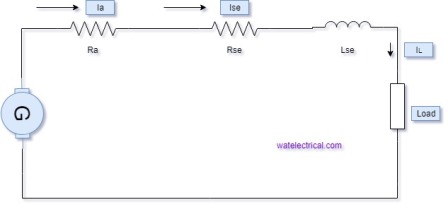
equivalent circuit
From the circuit, we know that
Ise = Il = If
The terminal voltage equation from the circuit diagram is Vt = Ea – Ia (Ra + Rse).
As the winding is in series, the current is more and in order to produce the necessary MMF the winding is wound with fewer turns compared to shunt type machine.
MMF = Nse Ise
Working
It works similar to a normal type generator and the working principle is an electromagnetic inductor. When the conductors placed in the magnetic field are rotated by a mechanical input. These conductors cut the flux and induce a current to flow. This induced current is able to produce a voltage that is used as the output of electrical energy. The working of the DC series type is shown in the figure below.
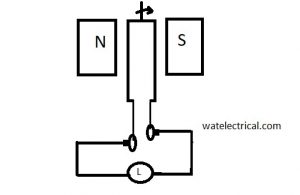
Generator Working
Load Test of DC Series Generator
The load test is conducted to draw internal and external characteristics. The load circuit diagram is shown in the figure below.
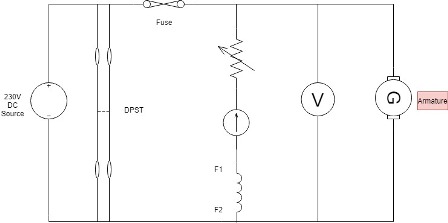
load-test
To know the values of voltage generated with respect to the load current in order to draw the curves vary the input voltage to the rated value and note the respective values.
Please refer to this link to know more about DC Generator MCQs
Characteristics
The characteristics are generally considered to know the performance characteristics of the machine. The internal and external characteristics of the dc series generator are drawn between the voltage generated and load current and terminal voltage and load current. The magnetization curve is drawn between the no-load voltage and the load current. The magnetization curve is shown in the figure below.
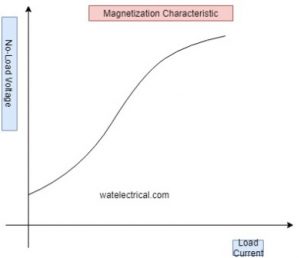
magnetization-characteristics
The Internal characteristic curve is shown in the figure below.
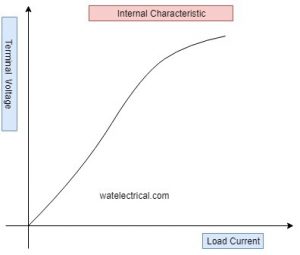
internal characteristics
The external characteristic curve is shown in the figure below.
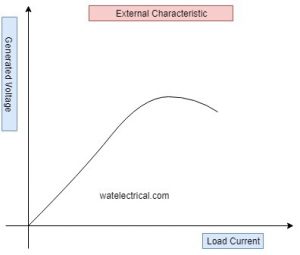
external characteristics
Applications
These machines are used in
- Boosters
- Locomotives
Thus, in this article, we had studied what is a DC series generator. It is a type of machine whose winding is attached in series with the armature winding such that the number of turns is less in order to produce the necessary flux. Apart from this, we had also studied its working, why load test is conducted, its characteristics, and applications. Here is a question for the readers, Magnetization characteristics curve is drawn between which values?